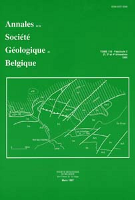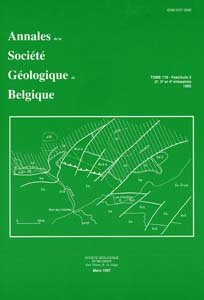- Home
- Publications spéciales = special publications
- Gisements stratiformes et provinces cuprifères - C...
- The gitology of some Adelaidean stratiform copper occurrences
View(s): 916 (18 ULiège)
Download(s): 442 (4 ULiège)
The gitology of some Adelaidean stratiform copper occurrences

Abstract
The gitology of some Adelaidean stratiform copper occurrences is discussed and compared with the bedded copper ores of Shaba Province, Zaire Republic. Both the Katanga and Adelaidean System are of Upper Proterozoic Age.
Sedimentation in South Australia during the late Proterozoic (Adelaidean) was cyclic; four major cycles are recognized. Conformable copper mineralization occurs at more than one stratigraphic level in the Adelaidean System.
These congruent copper occurrences are in shallow marine sediments, deposited under an arid climate in a lagoonal or marginal marine environment. The host sediments formed in sinuous palaeolittoral zones and contain evidence of biological activity and associated reducing conditions. The host rocks are quartz-feldspar clastic assemblages which are variably dolomitic, argillaceous and carbonaceous.
Generally the copper mineralization occurs in transgressive marine sediments close to underlying unconformities. The key to the understanding of these occurrences appears to lie in a knowledge of the palaeogeography under which the host sediments were deposited.
The sulphides are a pyrite-chalcopyrite-chalcocite assemblage. Vertical sulphide mineral zoning is very minor; lateral sulphide zoning is more common, and appears related to lithofacies. Sulphides are finely disseminated, and intimately related to primary depositional features.
The metamorphic grade at most of the occurrences is very low. However, at one, the host rocks are now high grade metamorphics and here the metamorphism has produced a coarsely crystalline sulphide assemblage.
Post depositional structures are not a major mineralization control. Syndepositional structures are closely associated with the bedded copper mineralization.
With the exception of thin volcaniclastics and lamprophyric dykes at one occurrence, and minor alkali metasomatism at another; no known igneous activity is associated with these occurrences.
Although many of these occurrences were the site of small gouging operations in high grade secondary mineralization at the turn of the century, none supports a significant mining operation.






